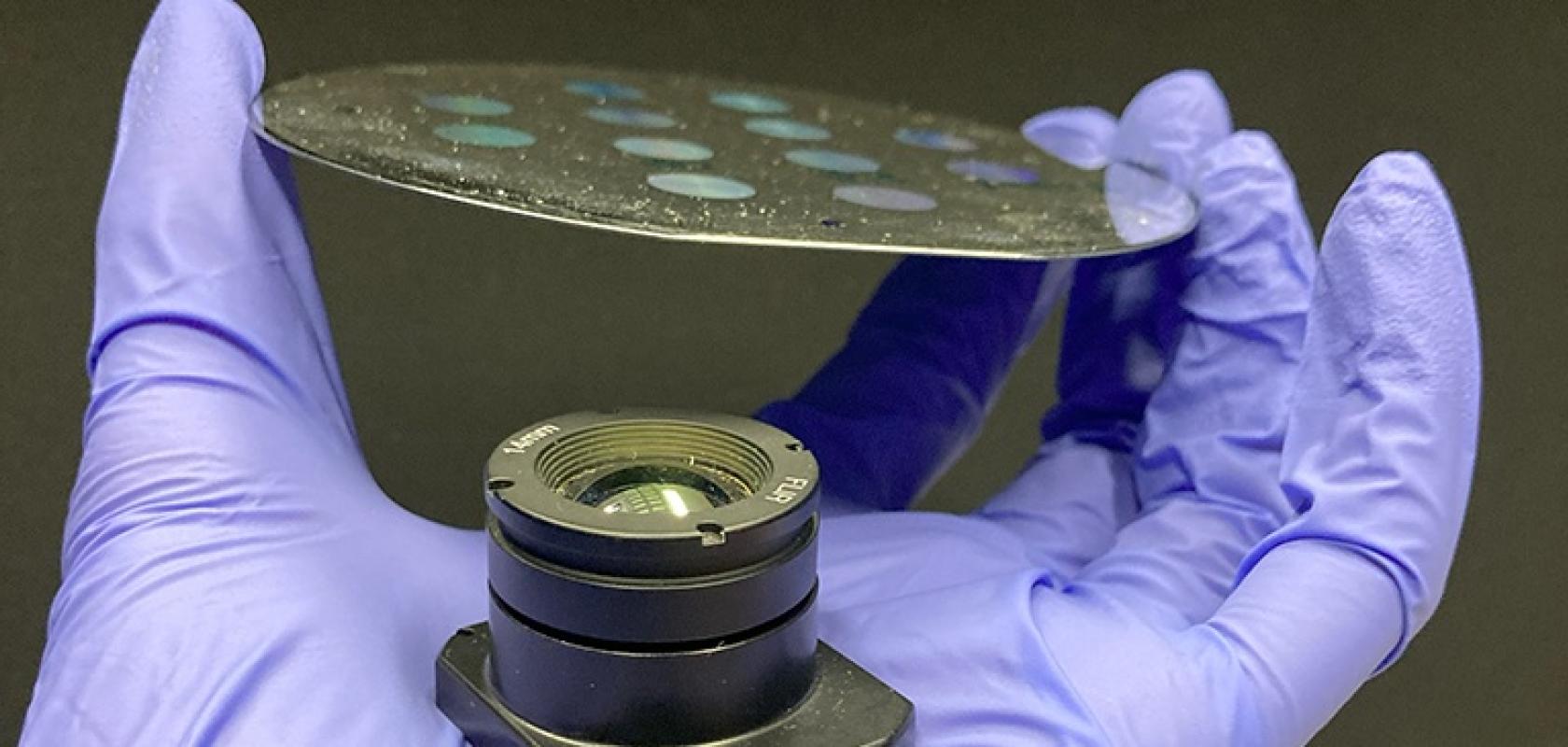Using a new inverse design framework, a research team has demonstrated broadband thermal imaging with meta-optics for applications ranging from consumer electronics to thermal sensing and night vision
Termed ‘modulation transfer function’ (MTF) engineering, which addresses the challenges associated with broadband meta-optics, the new framework determines how well a lens maintains image contrast as a function of spatial frequency.
The University of Washington team fabricated their designed optics from a single silicon wafer, which is promising for future applications involving germanium-free long-wave infrared (LWIR) imaging systems.
Chromatic aberrations plague meta optics
The next generation of optical systems demands lenses that are not only lighter and thinner than ever before, but also uphold uncompromising image quality. This demand has fueled a surge of efforts to develop ultra-thin sub-wavelength diffractive optics, known as meta-optics. Meta-optics, in their simplest form, consist of arrays of sub-wavelength scale nanopillars on a flat surface, with each pillar introducing a local phase shift to light passing through. By strategically arranging these pillars, the light can be controlled to produce steering and lensing.
While conventional refractive lenses are close to a centimetre thick, meta-optics are about 500 micrometres thick, which dramatically reduces the overall thickness of the optics.
However, one challenge with meta-optics is strong chromatic aberrations. That is, light of different wavelengths interacts with the structure in different ways, and the result is typically a lens that cannot simultaneously focus light of different wavelengths in the same focal plane. Largely because of this issue, meta-optics have not yet fully replaced their refractive counterparts despite the benefits in size and weight reduction.
In particular, the area of long wave infrared meta-optics is relatively unexplored compared to visible wavelength meta-optics, and the potential advantages of meta-optics over conventional refractive lenses are significant given the unique and extensive applications of this wavelength range.
Artificial intelligence and a new inverse design framework
One key innovation in the research team’s approach is the use of artificial intelligence – a deep neural network (DNN) model – to map between pillar shape and phase. For an inverse design process for large area optics, it is not computationally feasible to simulate how the light interacts with each pillar at each iteration. To solve this problem, the authors simulated a large library of nanopillars (also called ‘meta-atoms’) and used the simulated data to train a DNN. The DNN enabled a quick mapping between scatterer and phase in the optimization loop, allowing the inverse design of large-area optics containing millions of micron-scale pillars.
Another key innovation in this work is the 'figure of merit' (FoM). In inverse design, one defines an FoM and computationally optimises the structure or arrangement to maximise the FoM. However, it is often not intuitive why the produced result is optimal. For this work, the authors leveraged their expertise in meta-optics to define an FoM that is intuitive.

Physics Associate Professor Arka Majumdar (image: Ryan Hoover)
Professor Arka Majumdar, who led the project, explained: “The figure of merit is related to the area under the MTF curve. The idea here is to pass as much information as possible through the lens, which is captured in the MTF. Then, combined with a light computational backend, we can achieve a high-quality image.
“The figure of merit reflects what we intuitively know about optics. This particular FoM is optimised when all the wavelengths perform equally well, thus constraining our optics to have uniform performance over the specified wavelengths without explicitly defining uniformity as an optimisation criterion.”
This approach, combining intuition from meta-optics and a light computational backend, significantly improves performance compared to simple metalenses.
While acknowledging that there is still room for improvement to achieve imaging quality comparable to commercial refractive lens systems, this work represents a significant step toward that goal.


